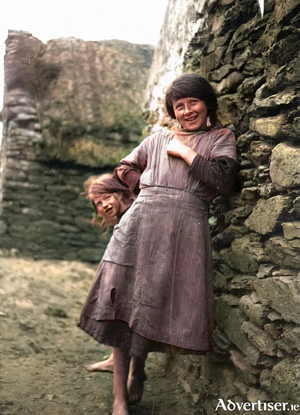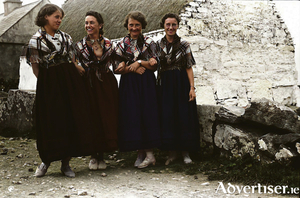Search Results for 'William Makepeace Thackeray'
5 results found.
‘It is rather the want of the middle class…’

For any visitor to Dublin in the early 19th century, to miss seeing the great Daniel O’Connell would have made their visit almost worthless. William Makepeace Thackeray, on the threshold of becoming one of the greatest writers of the English language, spent three months touring Ireland in 1842 collecting his impressions of the ‘manners and the scenery’ of the country and its people, for his successful Irish Sketch Book published some years later. Back in Dublin at the conclusion of his tour he lost no time heading to the Mansion House to see the Liberator in person.*
‘Ireland will be poor no longer’

From the comforts of Ballynahinch, such as they were at the time, William Makepeace Thackeray continues his exploration of the surrounding countryside as he gathered information for his successful Irish Sketch Book published some years after his tour in 1842.
There was a story told of a mermaid seen at Killala Bay
Continuing his wry and sardonic observations on the personalities, and the heaving populated life that he encounters on the roads, towns and villages along the way, the young William Makepeace Thackeray continued his journey through Connemara. In 1842 he spent four months on an extensive tour of this island, and later published his observations in the well received Irish Sketch Book to which he added numerous drawings mainly of the people he met. Yet for all his sceptical comments he is genuinely moved by the landscape of Connemara, and writes eloquently on intimate moments.
There was a story told of a mermaid seen at Killala Bay

Continuing his wry and sardonic observations on the personalities, and the heaving populated life that he encounters on the roads, towns and villages along the way, the young William Makepeace Thackeray continued his journey through Connemara. In 1842 he spent four months on an extensive tour of this island, and later published his observations in the well received Irish Sketch Book to which he added numerous drawings mainly of the people he met. Yet for all his sceptical comments he is genuinely moved by the landscape of Connemara, and writes eloquently on intimate moments.
The young priest who cried for two days in Carna

I hope the recent scandals in the Catholic Church will not discourage the noble tradition of the cleric as the social champion of the people. It is time that we had their like to nail their colours to the mast once again. Growing up in the last century, I was familiar with such names as Fr James McDyer and his tireless campaign against the official neglect of Gleann Cholm Cile; and Canon George Quinn and his fight for better social housing. There were several others, who have spilled over into recent years, including Fr Peter McVerry and his fight for homeless people in Dublin, and Fr Harry Bohan and his belief in the staying power of families in rural Ireland. But the champion of them all, the priest with the soft voice and a twinkle in both eyes, was the indefatigable Monsignor James Horan. Not only did he re-design the village of Knock to make it more people friendly, he built schools, clinics, and a convent, and a vast basilica. He organised community water schemes, and forestry plantations, and built an impressive international airport in the bogs of Mayo.

